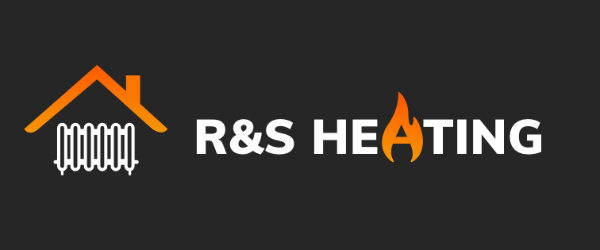Winter the UK can often bring prolonged spells of extremely cold weather – down to minus 20oC and below in many areas.
Condensate Pipes Can Often Be Frozen and Cause a Boiler to Shut Down
This results in increased number of calls to gas boiler manufacturers and heating engineers from householders with condensing boilers (aka High Efficiency) where the condensate drainage pipe had frozen and become blocked with ice, causing gas boilers to shut down.
In the vast majority of cases such problems occur where the condensate drainage pipe is located externally to the building for some part of its length.
Prolonged exposure to the cold causes condense to freeze and inhibits the boiler from fucntioning correctly. With the wealth of safety features modern gas boilers have, they shut themselves down until the problem is fixed.
British Standards, Gas Regulations and boiler manufacturers’ installation instructions currently allow condensate drainage pipes to be located either internally or externally, or a combination of these. Such guidelines give ginformation on how to install condensate pipework in order to reduce the possibility of freezing. However this guidance may not be sufficient to prevent
freezing in extreme conditions.
This Is A Handy Guide on what to do if a boiler condensate pipe has frozen – provided You feel competent to take the actions described.
If you do not feel competent to follow this guide then you should
contact your regular servicing organisation or a local Gas Safe
registered engineer, never attempt take apart a boiler or disconnect pipework. Registered gas engineers in your
area can be found using the postcode search facility on the Gas Safe
Register website at www.gassaferegister.co.uk
There are a number of suggestions, detailed below, which you may wish to take in order to thawyour condensate
pipe, free the blockage and re-start the boiler provided you feel confident in doing so -
1. Confirm that a frozen condensate pipe is the cause of Breakdown.
It is important to confirm that a frozen condensate pipe is the likely cause of the problem before taking any of the actions below.
The condensate drainage pipe is a plastic pipe (typically grey or white in colour) coming from the bottom of your boiler.
If the following circumstances apply then it is probable that a frozen condensate drainage pipe is the cause -
- Outside temperatures have been below freezing for some time.
- The condensate drainage pipe runs through the wall and outside the
property for part of its length, without any increased pipe diameter,
insulation or other measures to prevent freezing. There may also be a
problem if the pipe runs through an enclosed but unheated area, such as a
garage or loft. - The boiler has previously been working well, and the outside temperatures have been more favourable.
- Shutdown due to freezing and blockage of the condensate drainage pipe
will usually be indicated by a “fault code” on the boiler’s digital
display, although this may not specifically indicate freezing as the
fault. Indication may also be given by some other alarm such as a
flashing light, or by a symptom such as “gurgling” noises coming from
the boiler.
Note – refer to the boiler manual for guidance
on fault codes/alarms and their meaning – the boiler manufacturer or your
servicing company you use may also have a helpline or website giving
guidance on this.
2. Locate the blockage.
It is likely that the pipe is frozen at the most exposed point
external to the building or where there is some obstruction to flow.
This could be at the open end of the pipe, at a bend or elbow, or where
is a dip in the pipe in which condensate can collect. The location of
the blockage should be identified as closely as possible before taking
further action.
3. Thaw the frozen pipe.
Note: You should not attempt to thaw a condensate drain pipe if you
cannot easily reach it from ground level. Be aware that any water used
can quickly freeze if it falls onto pathways – causing a possible slip
hazard.
The pipe can be thawed by applying a hot water bottle, a
microwaveable heating pack (the sort used for muscular aches and pains)
or cloths soaked in warm water to the exterior of the pipe, close to the
likely point of blockage.Most often and quickest, warm/hot water can also be poured onto the pipe
from a watering can or similar container.Try not to use boiling water, as this can melt certain plastics.
4. Reset/re-start the boiler.
Once the blockage has been thawed and cleared, consult the boiler
operating instructions or check the manufacturer’s website for guidance
on any action needed to “reset” the fault code/alarm and start the
boiler.
In most cases, once the condensate drain pipe is cleared
and a reset has been carried out, the boiler will re-ignite using an
automatic operating sequence.
If this reset/restart does not
succeed you should call in a competent gas-safe registered engineer to assess the situation
and take further action if required.
5. Temporary remedial actions:
If the pipe is successfully thawed and the boiler can be re-started
then the following temporary remedial actions may help prevent
re-freezing if the severe weather continues.
- If the external pipe is not insulated as recommended, you should try
to rectify this by attaching suitable water-proof and weather-proof
insulation over the outside of the pipe to prevent re-freezing. “Class
O” pipe insulation is suitable for external use and should be available
from DIY outlets and plumbing/heating suppliers. - During the cold spell it may help to temporarily run the heating system with the boiler thermostat (as distinct from the room thermostat) set to maximum. Turn back to the normal setting used once the cold spell is over.
- It may also help to temporarily set the central heating timer/programmer to “continuous” (24hr) mode, setting the room thermostat overnight to around 15oC. Again, return to the normal settings once the cold spell is over.
6. Longer term actions:
Current regulations currently allow condensate pipes to run either internally or
externally (or a combination of these). These documents give
recommendations on how to run the pipe and use insulation, if required,
in order to reduce the possibility of freezing.
Should
you wish to take action in order to reduce the risk of freezing in
future, by relocating the condensate drainage pipe or taking other
measures, then more detailed guidance is available from your installer
or service engineer.


